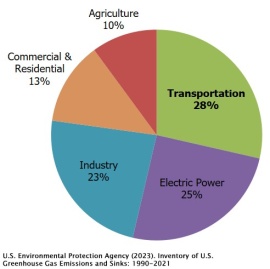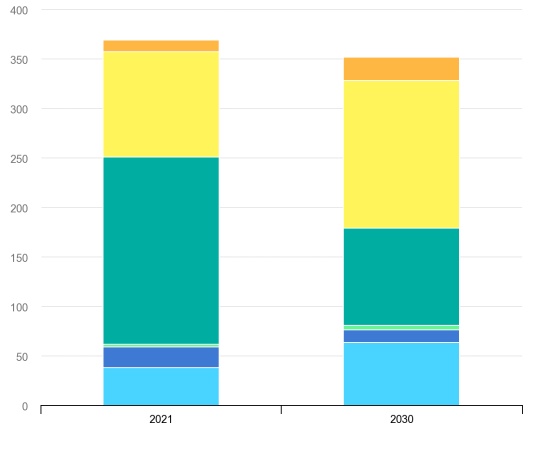The Environmental Footprint of Clean Energy
| Ella Laurent, Communications Associate |

| Ella Laurent, Communications Associate |
As we celebrate Earth Month, it’s exciting to know that transitioning to renewable energy sources means positive environmental benefits for people and our planet.
In 2022, the United States endured an alarming 18 weather disasters with repairs costing nearly $1 billion. Research shows that low air quality correlates to increases in the severity and number of extreme weather events as well as public health concerns? But, there is a silver lining. If we can reach 80% renewable energy generation by 2050, we have the potential to save $1.2 trillion in health and environmental costs. It’s a lofty goal, but it’s worth striving for.
According to the American Clean Power Association (ACP), renewable energy sources, including wind, solar, and storage, currently provide 15 percent of the nation’s electricity. With tremendous wind and solar resources, the Midwest alone has 32,400 Megawatts (MW) of low-cost, clean, energy currently installed, and another 514 utility-scale clean energy projects, representing
91,000 thousand MW in development. This development will support our planet in many ways.
Here are 3 Ways Clean Energy Supports a Healthy Environment:
Clean energy supports a healthy planet by reducing carbon emissions that contribute to air and water pollution, decreasing water consumption, and benefiting farmland by promoting healthy soil.
Greenhouse Gas Emmissions (EPA)

Clean Energy Increases Air Quality
The use of fossil fuels releases large amounts of greenhouse gases, such as carbon dioxide, which pollute our environment and decrease our air quality. Globally, we have now reached a record high of 37.5 billion metric tons of carbon emissions. Carbon emissions cause smog and acid rain and contribute to rising temperatures and extreme weather events.
Generating more clean energy will allow us to move away from fossil fuel-based energy and thereby reduce greenhouse gas emissions from the electric sector. ACP reports that our currently installed wind, solar, and energy storage projects have avoided more than 435.5 million metric tons of carbon dioxide - that’s the equivalent of taking more than 94 million cars off the road.
Subscribe to our newsletter for the latest on energy & our work
Clean Energy Reduces Water Use
Expanding the use of clean energy resources also supports our nation's water conservation goals. According to ACP, clean energy projects avoided 218 billion gallons of water consumption. Solar and wind energy systems do not require water for power generation, whereas coal and natural gas power plants require a large amount of water for cooling. Expanding clean energy across the U.S. will result in water consumption reductions and positive environmental impacts.
Global water withdrawal in the energy sector in the Net Zero Scenario, 2021 and 2030 (IEA)

![]()
Clean Energy Improves Soil Health
Agriculture, particularly for food production, relies on healthy soil to support vegetation and livestock. Fortunately, solar farms support agriculture by promoting healthy habitat for growing crops or other beneficial vegetation underneath and around panels. Agrivoltaics enable land to be used for growing certain crops while harvesting the sun for crops. The shade from the panels lowers soil temperatures and increases the soil’s ability to absorb nutrients. Harvesting the sun gives the soil a chance to rest and rejuvenate, making the soil richer and reduces fertilizer and pesticide use that contribute to water pollution.
The bottom line is that the future of our planet depends on transitioning to and embracing sustainable and reliable clean energy. A clean energy future means supporting carbon reduction, water conservation, better air quality, and weather stabilization. Clean, affordable, reliable renewable energy delivers on all these important metrics.